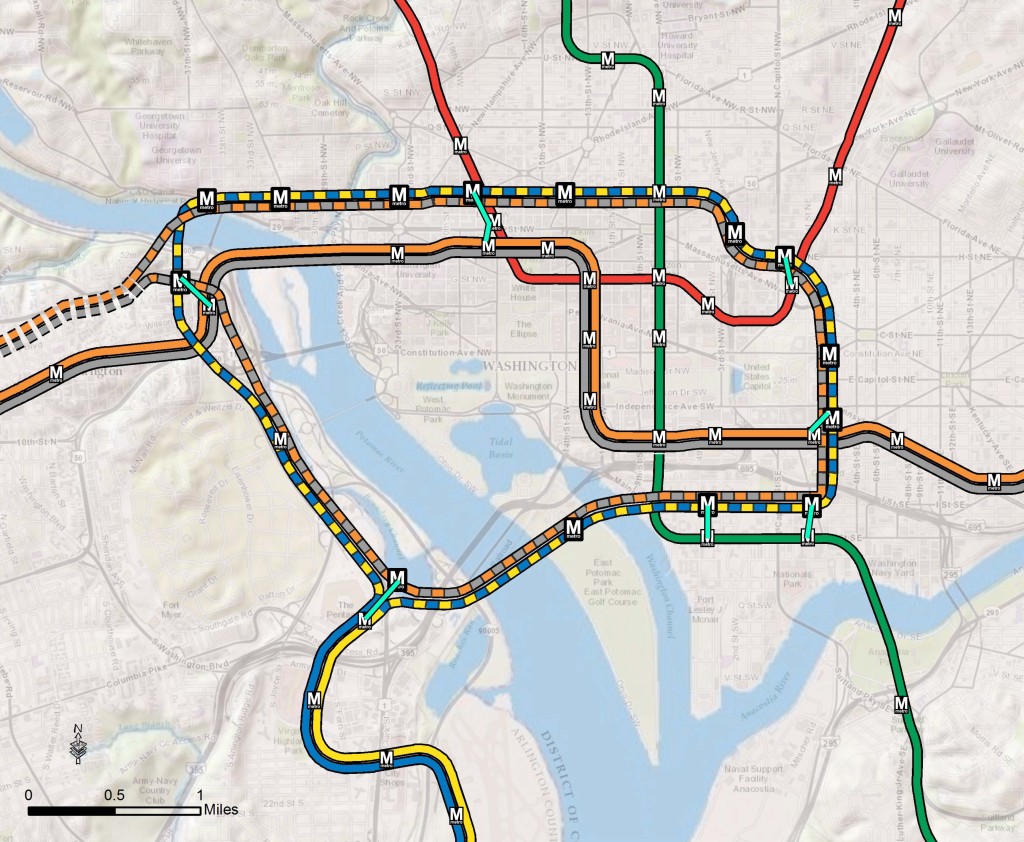WASHINGTON — After a week that saw Metro’s Red Line single-tracking during rush hours on Wednesday and Thursday in addition to other delays in the system, Virginia leaders say it might be helpful to think about where the region would be without Metrorail.
“WMATA is exceedingly important,” Deputy Transportation Secretary Nick Donohue says. The Washington Metropolitan Area Transit Agency operates Metrorail.
About 35 percent of people crossing from Virginia toward Maryland or D.C. in the morning rush use Metro, according to data presented to the Commonwealth Transportation Board this week. The vast majority are packing into trains entering D.C. through the Rosslyn Tunnel, which is used by the Blue, Orange and Silver Lines.
“Seeing that 35 percent — without WMATA, there is no way to provide highway capacity to move these people in and out of Virginia, the region would really just shut down in the a.m. rush hour,” Donohue told the board.
Since the Rosslyn Tunnel is already near capacity at rush hour, Metro’s long-range plans, targeted at 2025 and 2040, propose separating the Blue Line with a new station in Rosslyn that could connect to the Silver and Orange Line platforms. That separate route would continue across the Potomac into Georgetown, where a new downtown loop would serve new stations.

“It would be very expensive to create a new Rosslyn Tunnel. It will be even more expensive to build a new Rosslyn Tunnel and then build a tunnel underground in D.C. to move those cars once they get into the District. And so it’s not a simple prospect, and just [as] with highway bridge crossings, it will require significant coordination with the District, Maryland and the federal government,” Donohue says.
But with tens of thousands of people using Metro every day, Donohue does not see many other options to allow the region to continue to grow.
“An average lane of interstate, functioning well, can carry about 2,000 cars an hour, so if you think about what that might mean if Metro were ever to, say, go away, you would need 20 additional lanes of interstate capacity to be able to move the number of people … from D.C. back into Virginia. There is nowhere to put that, and there is no financial capacity to ever re-create those types of crossings,” Donohue says.
“A lot of focus has been put on, ‘Let’s get a new tunnel from Virginia into D.C. and that’s going to address the issues.’ We wish it were that simple, but it’s not just the tunnel that has a limited capacity of 26 trains per hour; it’s the entire system,” he adds.
Metro data have shown that although trains are scheduled to be at maximum capacity, slowdowns and delays have led to an actual average of closer to 24 or 25 trains per hour passing through the Rosslyn Tunnel at rush hour.
“If we build a new tunnel in D.C., we have to build a whole new tunnel all the way through D.C. that would serve that tunnel, or you really wouldn’t be doing anything other than having people cross the Rosslyn Tunnel and then getting stuck,” Donohue says.
Although Maryland has moved to slow the changes needed to provide all eight-car trains on Metro, Virginia Transportation Secretary Aubrey Layne is still pushing Metro to invest to be able to expand more Orange and Blue Line trains from six cars to eight to increase capacity. The crowding is only projected to get worse as the region continues to grow.
“Eight-car trains are going to be extremely important in the short term … we have got to get WMATA fixed; we don’t have a choice,” Layne says.







